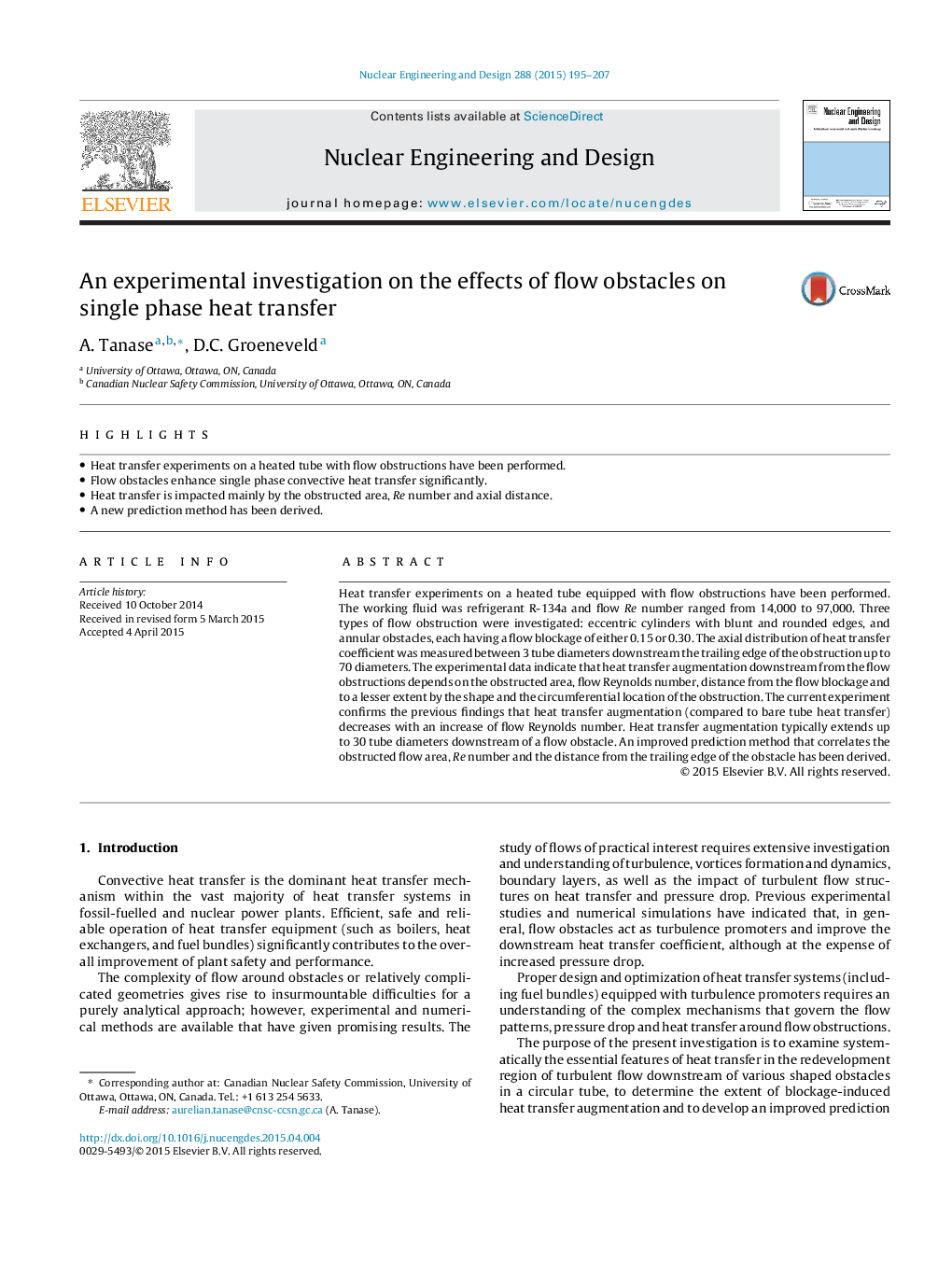| Article ID | Journal | Published Year | Pages | File Type |
|---|---|---|---|---|
| 6761209 | Nuclear Engineering and Design | 2015 | 13 Pages |
Abstract
Heat transfer experiments on a heated tube equipped with flow obstructions have been performed. The working fluid was refrigerant R-134a and flow Re number ranged from 14,000 to 97,000. Three types of flow obstruction were investigated: eccentric cylinders with blunt and rounded edges, and annular obstacles, each having a flow blockage of either 0.15 or 0.30. The axial distribution of heat transfer coefficient was measured between 3 tube diameters downstream the trailing edge of the obstruction up to 70 diameters. The experimental data indicate that heat transfer augmentation downstream from the flow obstructions depends on the obstructed area, flow Reynolds number, distance from the flow blockage and to a lesser extent by the shape and the circumferential location of the obstruction. The current experiment confirms the previous findings that heat transfer augmentation (compared to bare tube heat transfer) decreases with an increase of flow Reynolds number. Heat transfer augmentation typically extends up to 30 tube diameters downstream of a flow obstacle. An improved prediction method that correlates the obstructed flow area, Re number and the distance from the trailing edge of the obstacle has been derived.
Related Topics
Physical Sciences and Engineering
Energy
Energy Engineering and Power Technology
Authors
A. Tanase, D.C. Groeneveld,
